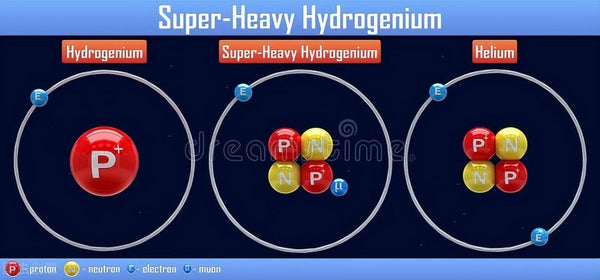Hydrogen fuels promise to be a clean and plentiful source of energy in the future, as long as scientists can figure out practical and cheap ways to generate hydrogen that don't require fossil fuels. A new study offers us another potential step in that direction, provided we can tap into the existing supply of post-consumer aluminum and gallium.
new breakthrough
In the new study, the scientists describe a relatively simple method that involves nanoparticles of aluminum. Nanoparticles of aluminum are able to strip oxygen from water molecules, leaving only hydrogen gas.
This process produces large amounts of hydrogen, all at room temperature. This removes the biggest obstacle to hydrogen fuel production, which is the large amount of energy required to use existing methods.
The technology also works with any kind of water, including wastewater and ocean water.
Professor Scott Oliver, a materials scientist at the University of California, Santa Cruz (UCSC), said: "We don't need any input to make hydrogen go crazy. I've never seen it before. Anything like that."
Materials and Benefits
The key to the process is the use of gallium metal, which allows the reaction with water to continue. We've known this aluminum-gallium-water reaction for decades, but here the research team maximized and enhanced the reaction in several specific ways.
With the help of scanning electron microscopy (SEM) and X-ray diffraction techniques, the researchers were able to figure out that the optimal mixture of aluminum and gallium to produce hydrogen with maximum efficiency was a 3:1 gallium- Aluminum composite material.
This gallium-rich alloy performs two jobs, the first is to remove the oxide coating of aluminum (which normally blocks the reaction with water), and the other is to create aluminum nanoparticles, which can make the reaction faster.
"Gallium separates the nanoparticles and prevents them from agglomerating into larger particles," said Bakthan Singaram, professor of organic chemistry at UCSC. "In the past, efforts were made to produce aluminum nanoparticles; now , we can produce them at normal atmospheric pressure and room temperature.
The mixing method is uncomplicated, and the composite can be stored for at least three months when stored in cyclohexane to protect it from moisture, which would otherwise reduce its effectiveness, the researchers report.
Aluminum is easier to obtain than gallium because it can be obtained from post-consumer materials such as discarded aluminum cans and aluminum foil. Gallium is more expensive and not as abundant, but in this process at least it can be recovered and reused many times without losing its effectiveness.
future efforts
There is still a lot of research that needs to be done, especially to determine whether it can be scaled up from a laboratory setup to be used on an industrial scale. However, early indications are that this is another method with great potential to generate hydrogen fuel.
"Overall, the gallium-rich gallium-aluminum mixture is capable of producing large amounts of hydrogen at room temperature without input energy, material manipulation, and pH adjustment," the researchers concluded in their paper.

